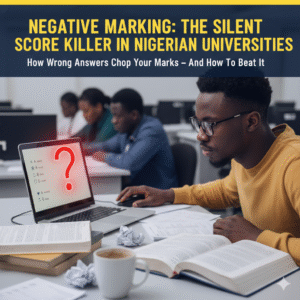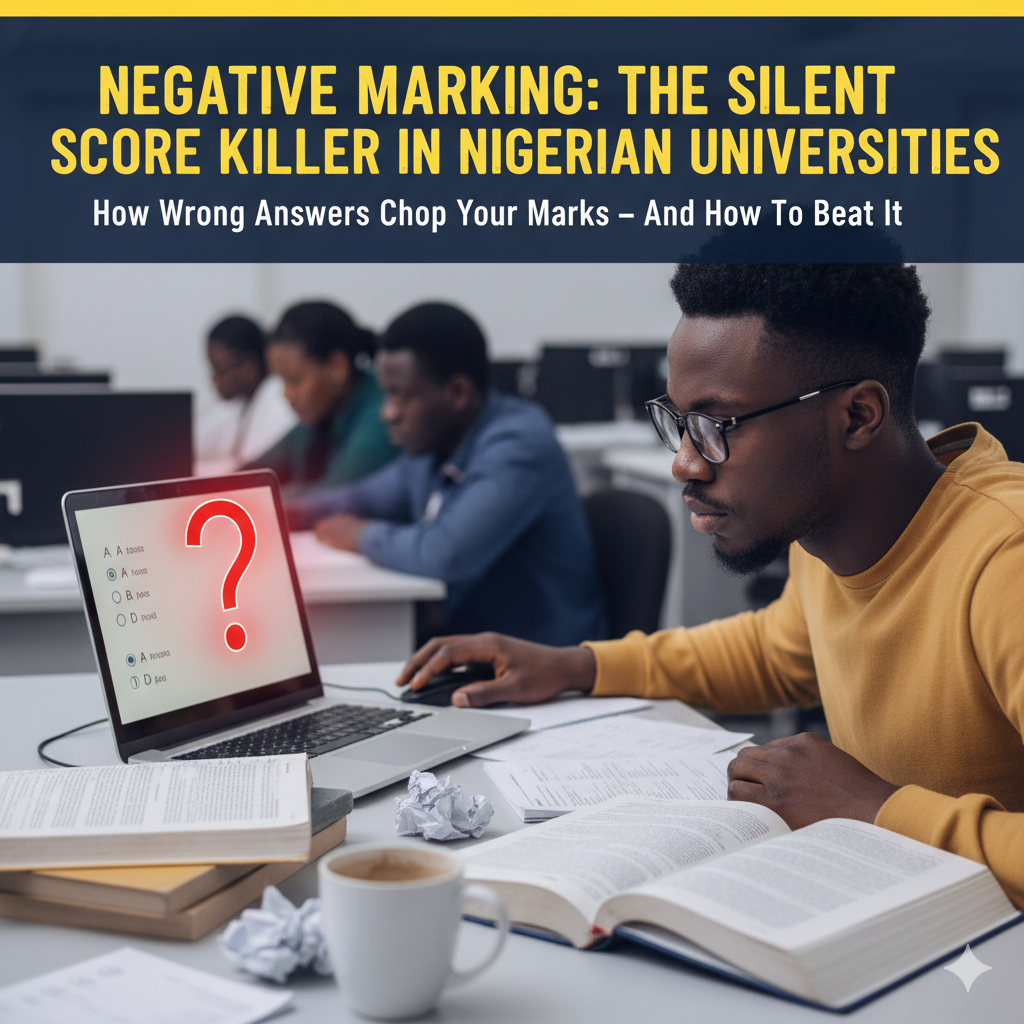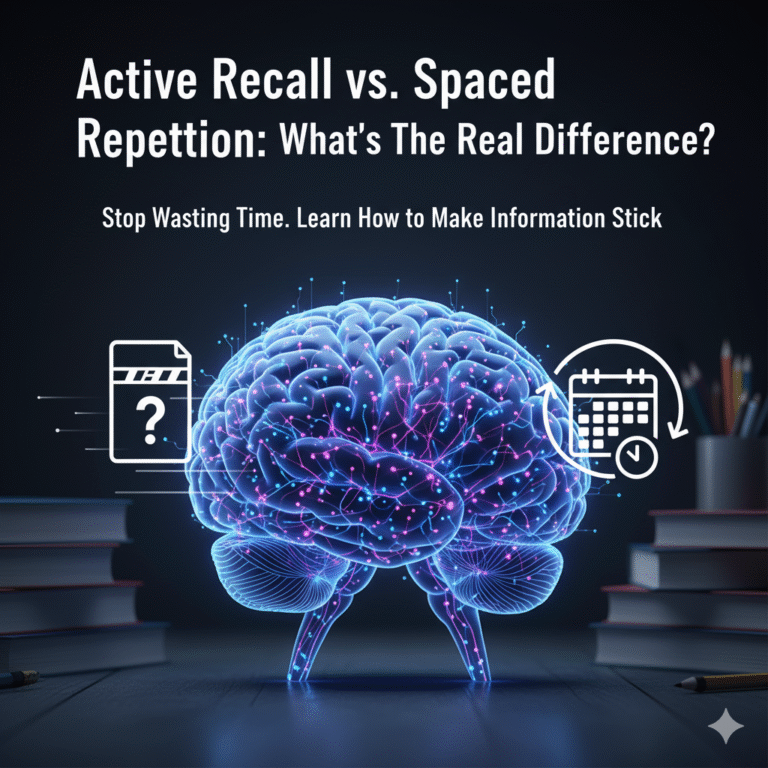What is Negative Marking in Nigerian Universities? (A Student’s Guide)
What is Negative Marking in Nigerian Universities? (A Student’s Guide)
Ever stared at your Post-UTME score and wondered, “How did my mark drop so low?” You were so sure you tried your best, but the total just doesn’t add up.
Well, let me introduce you to a possible culprit responsible for ‘chopping’ many students’ scores: negative marking.
So, what is negative marking in Nigerian universities and why should you care?
Put simply, it’s an exam scoring system where you don’t just get zero for a wrong answer. You actually lose marks from your total score.
It’s tough, but true.

How Does This ‘Mark-Chopping’ System Work?
In a normal exam (like most WAEC or NECO papers), if you get a question wrong, you just get 0 for it. No harm, no foul. Your total score is just the sum of your correct answers.
But with negative marking, a wrong answer brings a penalty.
Let’s use a common Post-UTME example. Imagine a CBT where:
- Correct Answer = +2 marks
- Wrong Answer = -0.5 marks
- No Answer (Blank) = 0 marks
Now, let’s say you answer 20 questions. You get 15 correct, but you guessed on 5 and got them wrong.
- Your ‘correct’ score is: 15 x 2 = +30 marks.
- Your ‘wrong’ penalty is: 5 x -0.5 = -2.5 marks.
- Your final total score is: 30 – 2.5 = 27.5 marks.
Without negative marking, you would have just scored 30. That 2.5-mark difference can be the only thing standing between you and the admission cut-off mark.
Where Will You Find Negative Marking in Nigeria?
This is the big question every JAMBite and university student asks.
JAMB (UTME): This is a popular myth. For many years now, JAMB has not used negative marking. Your UTME score is based on the number of questions you get right. So, for JAMB, my advice is to answer every single question, even if you have to guess.
Post-UTME: This is where you need to be sharp. Many federal universities (like the University of Ibadan, OAU, and UNILAG in the past) have used negative marking in their Post-UTME screenings. They do this to filter students, especially for very competitive courses.
University Exams: Once you get into school, you might see it again. Some ‘pre-clinical’ exams in Medicine or tough Engineering ‘weed-out’ courses use it to find the real gurus and separate them from those who just got lucky.
The golden rule? Always read the exam instructions! Before you click ‘Start’ on that CBT, they must tell you if negative marking is in play.
Why Do Schools Even Use It? It Feels Unfair!
I know, it feels like they are just trying to fail students.
But here’s the logic: they want to stop random guessing.
Think about it. In a 4-option (A, B, C, D) question, you have a 25% chance of guessing the right answer. A ‘lucky’ student could just shade ‘C’ all the way down and still get a quarter of the questions right by accident.
Negative marking forces you to answer only what you actually know. It’s designed to be a test of confidence and deep knowledge, not just ‘tinko-tinko’ luck.
How to ‘Defeat’ an Exam with Negative Marking
Okay, so you’ve seen the instruction: “Negative marking will be applied.”
Don’t panic. You just need to change your strategy.
A lot of students just answer everything anyway, like they’re writing JAMB. That’s a huge mistake.
Here’s how to handle it like a pro.
1. The ‘Banker’ Pass
Your first pass through the exam paper is for ‘bankers’ only. These are the questions you are 100% sure you know the answer to. Answer them immediately and secure those points. This builds your score and your confidence.
2. The 50/50 Rule (Strategic Guessing)
Now, go back to the questions you skipped.
Read a question. Can you confidently eliminate two of the four options? For example, you know A and D are definitely wrong, but you’re stuck between B and C.
This is a 50/50 chance. In this case, I’d say take the guess. The odds are usually in your favour (e.g., a 50% chance to win +2 marks vs. a 50% chance to lose -0.5 marks).
3. When in Doubt, Leave it Out
This is the hardest part, but it’s the most important.
If you look at a question and have no idea—you can’t even eliminate one option, or the topic is completely strange—just leave it blank.
It feels wrong to skip a question, but 0 marks is always better than -0.5 marks. A blank answer can’t hurt your score; it just doesn’t help it. A wrong answer actively pulls your score down.
This system punishes random guessing but rewards smart, calculated risks.
Wrapping Up
Negative marking isn’t a monster designed to fail you. It’s just a different set of rules for the game.
It changes the strategy from “answer everything” to “answer what you know.” The key is to read your instructions before you start and be honest with yourself about what you truly understand.
Have you ever written an exam with negative marking? How did you handle it? Share your experience in the comments!








One Comment